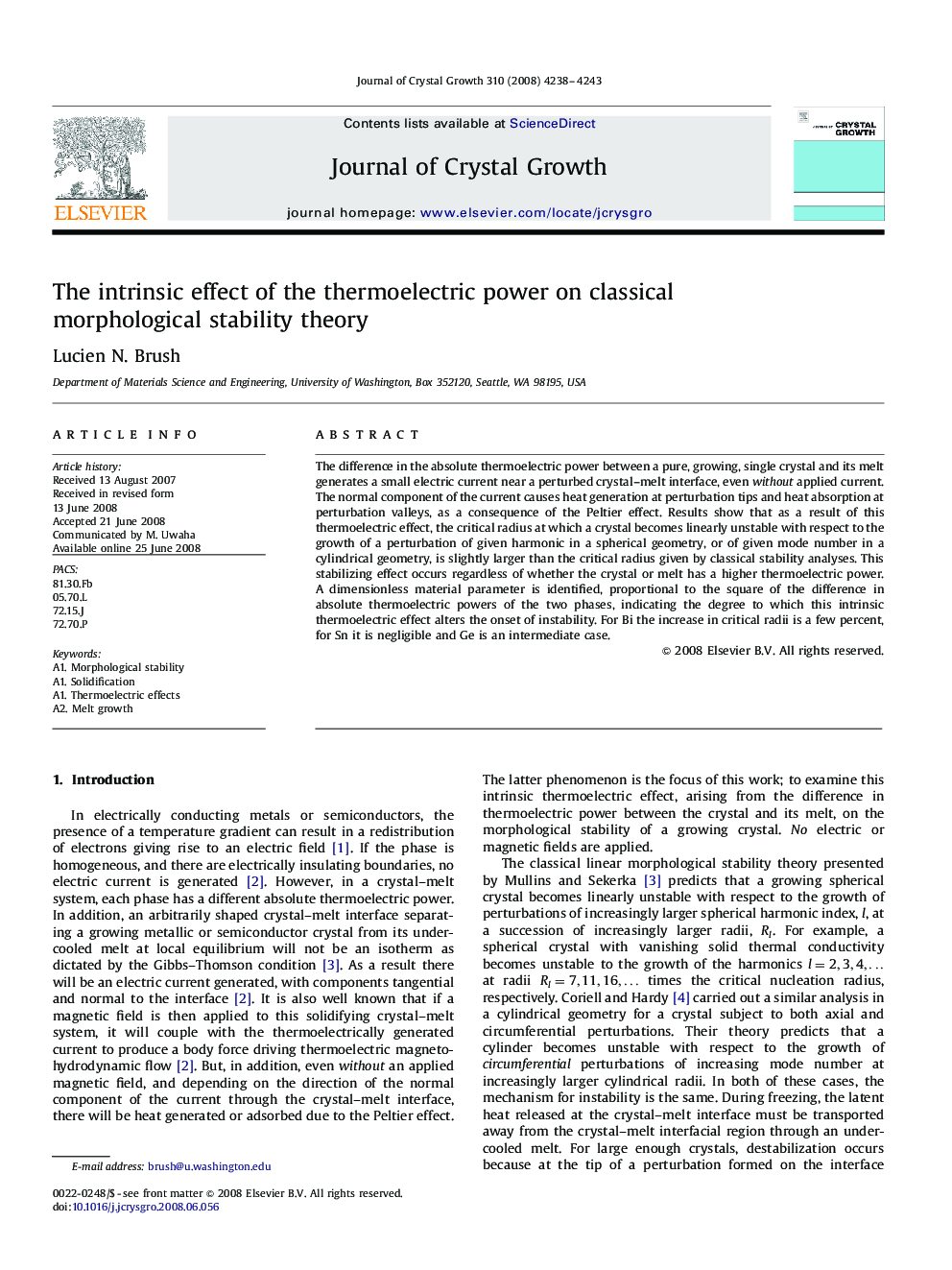| Article ID | Journal | Published Year | Pages | File Type |
|---|---|---|---|---|
| 1794806 | Journal of Crystal Growth | 2008 | 6 Pages |
Abstract
The difference in the absolute thermoelectric power between a pure, growing, single crystal and its melt generates a small electric current near a perturbed crystal-melt interface, even without applied current. The normal component of the current causes heat generation at perturbation tips and heat absorption at perturbation valleys, as a consequence of the Peltier effect. Results show that as a result of this thermoelectric effect, the critical radius at which a crystal becomes linearly unstable with respect to the growth of a perturbation of given harmonic in a spherical geometry, or of given mode number in a cylindrical geometry, is slightly larger than the critical radius given by classical stability analyses. This stabilizing effect occurs regardless of whether the crystal or melt has a higher thermoelectric power. A dimensionless material parameter is identified, proportional to the square of the difference in absolute thermoelectric powers of the two phases, indicating the degree to which this intrinsic thermoelectric effect alters the onset of instability. For Bi the increase in critical radii is a few percent, for Sn it is negligible and Ge is an intermediate case.
Related Topics
Physical Sciences and Engineering
Physics and Astronomy
Condensed Matter Physics
Authors
Lucien N. Brush,
